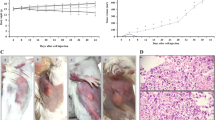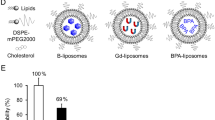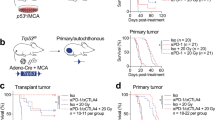Abstract
AFTER several years of effort based on the application of the principles of neutron capture therapy, we have empirically evolved a procedure which now can be added to the few effective treatments for established invasive transplantable neoplasms of animals. Previously, we discussed the biological utilization of thermal neutrons to generate alpha particles and lithium atom fragments from boron-10. We noted the pathways of these fragments are of cellular dimensions1–5, and how, in principle, one might thereby attain sharply localized intense effects. Our present observations on 611 neoplasms may serve to point towards achievement of these goals. In this communication we report the thermal neutron flux which must be incident on the skin over solid neoplasms 8 mm–17 mm in diameter to result in permanent regression after giving sodium pentaborate intravenously in a dose equivalent to 35 µg/g body weight of boron-10. Only a single treatment was required by this procedure.
This is a preview of subscription content, access via your institution
Access options
Subscribe to this journal
Receive 51 print issues and online access
$199.00 per year
only $3.90 per issue
Buy this article
- Purchase on Springer Link
- Instant access to full article PDF
Prices may be subject to local taxes which are calculated during checkout
Similar content being viewed by others
References
Farr, L. E., et al., Amer. J. Roent. Rad. Therap. Nuc. Med., 71, 279 (1954).
Farr, L. E., Robertson, J. S., and Stickley, E. E., Proc. US Nat. Acad. Sci., 40, 1087 (1954).
Farr, L. E., Clin. Aspect Nuc. Med. (edit. by Farr, L. E., Knipping, H. W., and Lewis, W. H.), 179 (Westdeutsche, Vertag Koln, 1961).
Farr, L. E., et al., Response of the Nervous System to Ionizing Radiation (edit. by Haley, T. S., and Snider, R. S.), 441 (Academic Press, New York, 1962).
Farr, L. E., Deutsche Therapiewoche, 17, 603 (1966).
Easterday, O. D., and Hamel, H., Arch. Pharmacodyn., 143, 144 (1961).
Easterday, O. D., and Farr, L. E., J. Pharm. and Exp. Therap., 132, 392 (1961).
Konikowski, T., and Farr, L. E., Clin. Chem., 11, 378 (1965).
Farr, L. E., and Konikowski, T., Clin. Chem., 9, 717 (1963).
Farr, L. E., Science, 130, 1067 (1959).
Stickley, E. E., Nature, 183, 1013 (1959).
Farr, L. E., and Konikowski, T., Proc. IAEA Symposium Biological Effects of Neutron and Proton Irradiation, 2, 157 (1964).
Easterday, O. D., Arch. Pharmacodyn., 112, 50 (1957).
Author information
Authors and Affiliations
Additional information
An erratum to this article is available at https://doi.org/10.1038/215906b0
Rights and permissions
About this article
Cite this article
FARR, L., KONIKOWSKI, T. Transplantable Mouse Neoplasm Control by Neutron Capture Therapy. Nature 215, 550–552 (1967). https://doi.org/10.1038/215550a0
Received:
Revised:
Published:
Issue Date:
DOI: https://doi.org/10.1038/215550a0
Comments
By submitting a comment you agree to abide by our Terms and Community Guidelines. If you find something abusive or that does not comply with our terms or guidelines please flag it as inappropriate.



